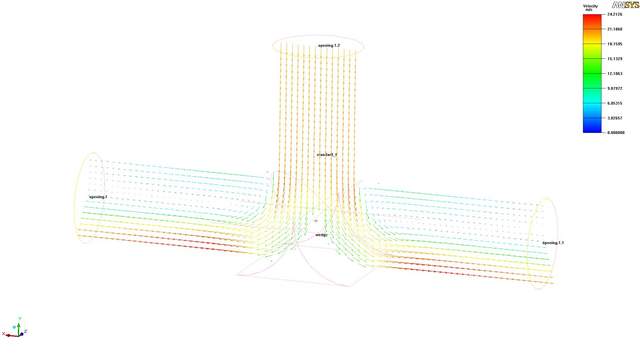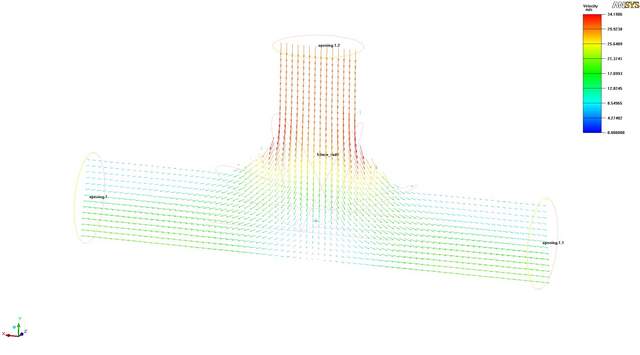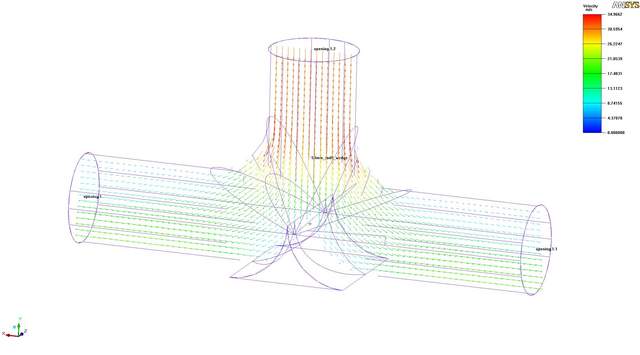 12-07-2011, 02:21 PM
12-07-2011, 02:21 PM
|
#1
|
|
Rennzenn
Join Date: Feb 2005
Location: Virginia
Posts: 1,369
|
Last year I picked up a 996 TB and the intake T from a Porsche dismantler. I had the intake T modded by Pedro with the Techno-Torque. The original 986 rubber connector hoses in the intake are flexible enough that I was able to reuse them. It works. I haven't dyno'ed yet, but the car pulls harder through the midrange and top end. You know the surge a stock 986S gets around 5K? I'm getting that at about 4K now...
I really need to dyno this thing
|

|

|
 12-07-2011, 02:44 PM
12-07-2011, 02:44 PM
|
#2
|
|
Registered User
Join Date: Apr 2010
Location: Canada
Posts: 3,152
|
very good to know. were you able to make the stock aos piping reach as well?
regarding the technotorque, i think it solves part of the problem but not all of it. when the air hits the 'T' it has to turn left or right around a sharp 90 degree corner. as a result, the air will cavitate in two places - at the split on the outside of the turn, and at the sharp corner on the inside of the turn. the technotorque puts a splitter on the outside of the turn, but doesn't do anything for the sharp corner on the inside of the turn.
if you think about it, what will limit airflow is the restriction caused by the inside of the turn; this is why the ipd product posts better results than the technotorque.
but it's all better than stock, and the TT is a better value than ipd.
|

|

|
 12-07-2011, 05:20 PM
12-07-2011, 05:20 PM
|
#3
|
|
Rennzenn
Join Date: Feb 2005
Location: Virginia
Posts: 1,369
|
For the AOS, I had to flip the T upside down, since the AOS is on the opposite side in the 996. I bonded a piece of PVC into my AOS as one fitting, then cut the factory fitting going into the T as the other fitting. Between them I have run a piece of rubber heater hose, secured on each end with screw clamps.
I'd like to ditch the factory AOS altogether and run a Moroso unit, plumbed in with stainless hose.
One more note, the bigger TB and change in the position caused by the different T causes the intake tubing to rub the engine cover. I had to use foam/aluminum HVAC insulation to create a barrier to prevent the intake tube from having a hole rubbed through it.
|

|

|
 12-07-2011, 06:47 PM
12-07-2011, 06:47 PM
|
#4
|
|
Registered User
Join Date: Nov 2009
Location: mass
Posts: 731
|
i have been taking a closer look at this mod. the IPD plenum looks like a high quality piece but i just can't justify the price plus the larger throttle body . Does anyone think that this part could be made out of epoxy or fiberglass construction. two molded halves bonded together?
|

|

|
 12-08-2011, 10:21 AM
12-08-2011, 10:21 AM
|
#5
|
|
Registered User
Join Date: Nov 2008
Location: Massachusetts
Posts: 4,810
|
Is it possible to interface a 74mm throttle body with the oem plenum or a TT2 using silicone reducers ? If, so, would it net a positive result even though the plenum is much smaller by comparison ?
__________________
Don't worry … I've got the microfilm.
|

|

|
 12-08-2011, 10:50 AM
12-08-2011, 10:50 AM
|
#6
|
|
Registered User
Join Date: Sep 2009
Location: toronto
Posts: 2,668
|
Quote:
Originally Posted by Johnny Danger

Is it possible to interface a 74mm throttle body with the oem plenum or a TT2 using silicone reducers ? If, so, would it net a positive result even though the plenum is much smaller by comparison ?
|
I think the walls may be too thin to modify.....see my #4 post. It looks like it is best to try a 996 Tee as jfro has done
__________________
986 00S
|

|

|
 12-08-2011, 10:44 AM
12-08-2011, 10:44 AM
|
#7
|
|
Registered User
Join Date: Sep 2009
Location: toronto
Posts: 2,668
|
Quote:
Originally Posted by j.fro

Last year I picked up a 996 TB and the intake T from a Porsche dismantler. I had the intake T modded by Pedro with the Techno-Torque. The original 986 rubber connector hoses in the intake are flexible enough that I was able to reuse them. It works. I haven't dyno'ed yet, but the car pulls harder through the midrange and top end. You know the surge a stock 986S gets around 5K? I'm getting that at about 4K now...
I really need to dyno this thing
|
Ahhhh somebody has already been there! Will Pedro modify a 3.4 intake tee with a special diverter piece? Or is this available for the 3.4 just as it is for the Boxsters?
You will definitely have to get some dyno work done!!
__________________
986 00S
|

|

|
 10-10-2016, 10:27 PM
10-10-2016, 10:27 PM
|
#8
|
|
Registered User
Join Date: Dec 2014
Location: Pasadena
Posts: 261
|
Eddy, I'm over 60 and it's been a year since this mod so I can't remember if I pushed one end into the other then grafted it with a plastic welder or if I just joined them end to end. The taper you see is from the welder. It works very well and quite stout too. HF has a cheap one. If you follow fellow Krams thread elsewhere on this forum he gives details. I pretty much applied his procedure. The toughest part of the mod is replacing the 986 airbox with a 987 box.
The more I thought about it yes I believe it slipped over then welded. But don't forget the air straightner/combmesh that has to get installed with hot glue gun also.
Last edited by Lapister; 10-10-2016 at 10:33 PM.
|

|

|
 12-08-2011, 11:11 AM
12-08-2011, 11:11 AM
|
#9
|
|
Registered User
Join Date: Nov 2008
Location: Massachusetts
Posts: 4,810
|
Quote:
Originally Posted by j.fro

Last year I picked up a 996 TB and the intake T from a Porsche dismantler. I had the intake T modded by Pedro with the Techno-Torque. The original 986 rubber connector hoses in the intake are flexible enough that I was able to reuse them. It works. I haven't dyno'ed yet, but the car pulls harder through the midrange and top end. You know the surge a stock 986S gets around 5K? I'm getting that at about 4K now...
I really need to dyno this thing
|
If you don't mind me asking , what were the costs involved ?
__________________
Don't worry … I've got the microfilm.
|

|

|
 12-09-2011, 02:56 PM
12-09-2011, 02:56 PM
|
#10
|
|
Porscheectomy
Join Date: Mar 2006
Location: Seattle Area
Posts: 3,011
|
It lowers losses to have larger tubes up to the throttle body. The pressure losses due to friction in a tube are directly related to the speed of the flow running through the tube.
Set the throttle body at something, 76mm, then run a 76mm tube 3 feet up to the throttle body and pull a vaccum. Measure the speed of the air at the inlet of the tube. Now run exactly the same experiment but start with a 100mm tube that gradually drops to 76mm at the throttle body. The speed of the air at the inlet is lower. If you look at the flow rate through each of these for a given vaccum level, the decreasing tube will have a higher flow rate. It's analogous to running a set amount of electrical current through a fat wire or a thin wire at a specific voltage. The thin wire heats up more due to resistance.
I think I showed the attached pictures before of flow entering a "T". When the center stream of the flow leaves the entering section and hits the back wall of the T, it stops or stagnates. The flow along the sides of the entering tube is pressed out by the stagnated flow from the center of the tube and makes it's way out towards the outlet of the T. In other words, the flow makes it's own wedge. Adding a wedge, without many, many experiments or fluid modeling, is more likely to hurt than to help with the airflow.
The more interesting thing about the picture is the big "dead" zones as the flow near the walls leaves the entering tube. This is known as separation. The tube in the T section may as well be half as large because the air isn't doing anything in the corners. If the entering tube where rounded as it merges with the T, the air could more easily follow the contours of the transition and use more of the volume of the tube. There is a potential for a HUGE benefit to airflow.
|

|

|
 12-09-2011, 08:50 PM
12-09-2011, 08:50 PM
|
#11
|
|
Registered User
Join Date: Sep 2009
Location: toronto
Posts: 2,668
|
Quote:
Originally Posted by blue2000s

It lowers losses to have larger tubes up to the throttle body. The pressure losses due to friction in a tube are directly related to the speed of the flow running through the tube.
Set the throttle body at something, 76mm, then run a 76mm tube 3 feet up to the throttle body and pull a vaccum. Measure the speed of the air at the inlet of the tube. Now run exactly the same experiment but start with a 100mm tube that gradually drops to 76mm at the throttle body. The speed of the air at the inlet is lower. If you look at the flow rate through each of these for a given vaccum level, the decreasing tube will have a higher flow rate. It's analogous to running a set amount of electrical current through a fat wire or a thin wire at a specific voltage. The thin wire heats up more due to resistance.
I think I showed the attached pictures before of flow entering a "T". When the center stream of the flow leaves the entering section and hits the back wall of the T, it stops or stagnates. The flow along the sides of the entering tube is pressed out by the stagnated flow from the center of the tube and makes it's way out towards the outlet of the T. In other words, the flow makes it's own wedge. Adding a wedge, without many, many experiments or fluid modeling, is more likely to hurt than to help with the airflow.
The more interesting thing about the picture is the big "dead" zones as the flow near the walls leaves the entering tube. This is known as separation. The tube in the T section may as well be half as large because the air isn't doing anything in the corners. If the entering tube where rounded as it merges with the T, the air could more easily follow the contours of the transition and use more of the volume of the tube. There is a potential for a HUGE benefit to airflow.
|
Are you using the CFX package in Ansys to model the flow?
Looks to me like the optimum flow regions are scribing a 'Y' pattern! The diverter being it the centre bottom stagnant zone. It looks to me that this shape would reduces losses but.... Don't forget that we are drawing air in and there are varying pulses. I would be concerned with any tendancy for the banks of cylinders drawing from side to side over the diverter. This may not happen to any large degree but in this case I would think a tee would be better.
I went and look at the ipd and low a behold they have relief hole put through the diverter. They look just big enough for pressure balancing side to side.
Is the Y pipe model next???
__________________
986 00S
|

|

|
 12-10-2011, 05:29 AM
12-10-2011, 05:29 AM
|
#12
|
|
Registered User
Join Date: Aug 2011
Location: Chicago
Posts: 475
|
Quote:
Originally Posted by blue2000s

I think I showed the attached pictures before of flow entering a "T".
|
I'd be very interested in seeing a simulation like this for Pedro's techno insert in the T junction... Any chance you can whip one of those up?
__________________
Some kind of happiness is measured out in miles
2003 Midnight Blue S
LN IMS Retrofit
|

|

|
 12-10-2011, 09:38 AM
12-10-2011, 09:38 AM
|
#13
|
|
Registered User
Join Date: Apr 2010
Location: Canada
Posts: 3,152
|
blue - i get that it lowers losses to have larger pipes up to the constriction; my question is that, if the throttle body is the constriction, why did porsche put it in the system at all?
regardless, the ipd dynos show that a larger throttle body with a better-designed plenum is a winner on the 986 (the 987/cayman have a resonance flap on the oem plenum that is removed in the ipd product, hense i think the poor low rpm performance on the ipd kit for these cars).
the idea is to make the ipd product without the ipd $. as has been pointed out, the pedro product is flawed in that it doesn't address the turbulent flow that occurs on the inside radius of the 'T'.
the best solution i see is to fab a 'Y' pipe out of silicone that mates to the flange/aos end of a cayman plenum and throttle body.
|

|

|
 12-11-2011, 06:16 AM
12-11-2011, 06:16 AM
|
#14
|
|
Registered User
Join Date: Nov 2009
Location: mass
Posts: 731
|
what kind of realistic gains can be made by this mod ? if it is just a few h.p. like 5 or less i do not think it is worth the cost. if you can get about 10 to 15 h.p. then i think it would a good value. does anyone have any solid numbers for gains on a 3.2 engine ?
|

|

|
 12-13-2011, 04:55 AM
12-13-2011, 04:55 AM
|
#15
|
|
Porscheectomy
Join Date: Mar 2006
Location: Seattle Area
Posts: 3,011
|
I'm using Fluent in these simulations.
A Y will be more efficient than a T for airflow in a steady state, that's correct.
Keep in mind that with three cylinders to a plenum, there is a pretty much constant flow of air into the plenum when the engine is kept at a constant speed. There is always a cylinder pulling air. The pulses that influence secondary pressure waves are important, but they are secondary in nature so the influence on flow is on a much lower order than the primary vacuum pulled by the cylinders themselves.
Here are three more simulations varying on the one I posted earlier. The first one just adds a sloped wedge to the original T. The second adds a large radius to the T junction and the last one combines the radius with the wedge.



The volume flow rate results show that the T and T with wedge have almost identical flow rates. The radius-ed T with and without the wedge are both almost the same flow rates but are about 30% greater than the standard T.
|

|

|
 Posting Rules
Posting Rules
|
You may not post new threads
You may not post replies
You may not post attachments
You may not edit your posts
HTML code is On
|
|
|
All times are GMT -8. The time now is 01:31 AM.
| |